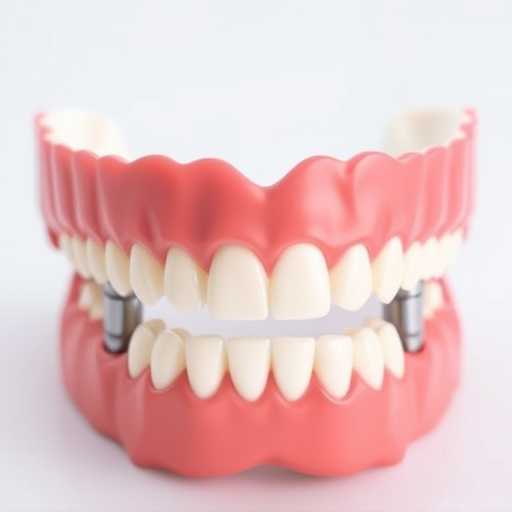Root canal treatment saves infected/damaged teeth by removing inner pulp, cleaning root canals, and filling them to prevent further spread of infection. After a dental exam & X-rays, a dentist numbs the area, enters the pulp chamber, extracts pulp, cleans & shapes canals, fills them with gutta-percha, and places temporary fillings/crowns. Proper aftercare, including pain management, salt water rinses, flossing, and regular checkups, ensures healing, minimizes infection risks, and promotes long-term oral health.
Root canal treatment is a common dental procedure used to save infected or damaged teeth. When the inner layer of a tooth, known as the pulp, becomes infected due to decay or injury, root canal therapy becomes necessary. This article guides you through understanding when and why root canal treatment is essential, walking you through the step-by-step procedure, and offering aftercare tips for successful long-term health.
- Understanding Root Canal Treatment: When and Why It's Necessary
- The Procedure Step-by-Step: What to Expect During the Process
- Aftercare and Long-Term Health: Ensuring Successful Recovery
Understanding Root Canal Treatment: When and Why It's Necessary

Root canal treatment is a crucial procedure when a tooth becomes infected or severely damaged, often due to decay, cracks, or trauma. It involves removing the inner part of the tooth, known as the pulp, which contains blood vessels, nerves, and connective tissue. This process stops the spread of infection and prevents further damage. The affected area is then cleaned, shaped, and filled with a special material to restore the tooth’s structure and function.
This treatment is typically recommended when a dental cleaning or regular teeth cleaning procedures are not enough to save the tooth. It is a highly effective way to preserve natural teeth and prevent the need for extraction. By addressing the issue promptly, it also helps maintain overall oral health, reducing the risk of complications like bone loss or the spread of infection to nearby teeth and gums.
The Procedure Step-by-Step: What to Expect During the Process

Root canal treatment is a common procedure to save infected or damaged teeth. Here’s what to expect during the process. First, your dentist will perform a thorough examination and take X-rays to determine the extent of the damage or infection. If a root canal is recommended, they’ll start by numbing the area around the tooth to ensure you feel no discomfort. They then create a small opening in the tooth, usually at the gum line, to access the inner pulp chamber.
Using specialized tools, the dentist carefully removes the infected or damaged pulp while cleaning and shaping the root canal. After ensuring all infected material is removed, they fill the channel with a special gutta-percha material to seal it off. Finally, a temporary filling or crown is placed over the tooth for protection until a permanent restoration can be fitted during a separate appointment, often involving general dentistry procedures like dental bonding or a custom-made crown.
Aftercare and Long-Term Health: Ensuring Successful Recovery

After a root canal treatment, proper aftercare is essential for ensuring a successful recovery and long-term health of your teeth. It’s crucial to follow your dentist’s specific instructions, which may include recommendations for pain management, flushing with salt water, and avoiding certain foods that could irritate the treated area. Additionally, maintaining comprehensive dental care routines at home, such as regular brushing and flossing, is vital to prevent further issues.
For some individuals, wisdom tooth removal might be part of this process if infected or impacted teeth are involved. As with any dental procedure, emergency dental care services should be readily available in case of unexpected complications. Remember, a proactive approach to aftercare not only speeds up healing but also significantly reduces the risk of future infections and contributes to overall oral health.
Root canal treatment is a highly effective procedure for saving infected or damaged teeth, providing long-lasting relief from pain and discomfort. By carefully removing the infected pulp and nerve tissue, sealing the tooth, and restoring its natural function, this treatment offers a permanent solution to prevent further decay and maintain oral health. With proper aftercare, including regular dental check-ups and good oral hygiene practices, patients can enjoy a successfully healed tooth for many years to come.














